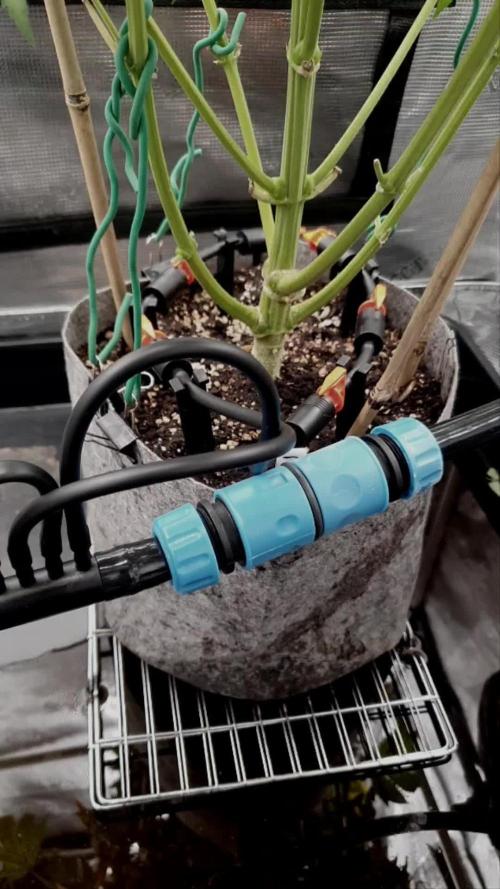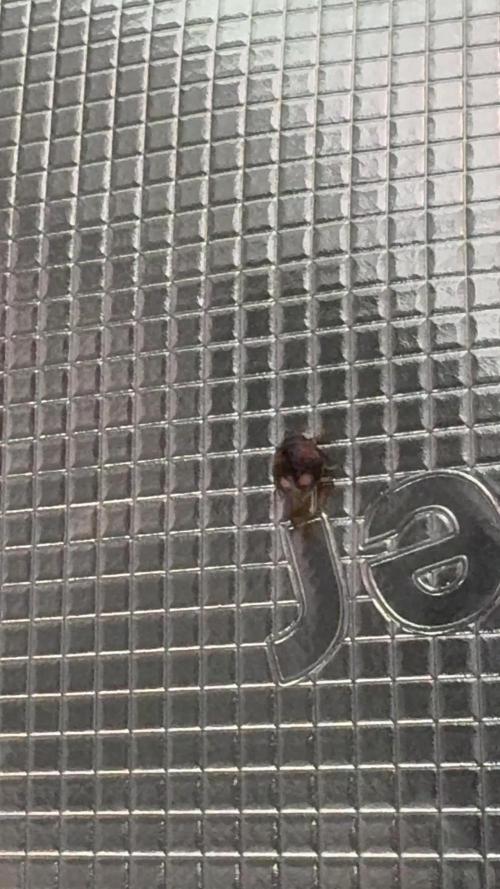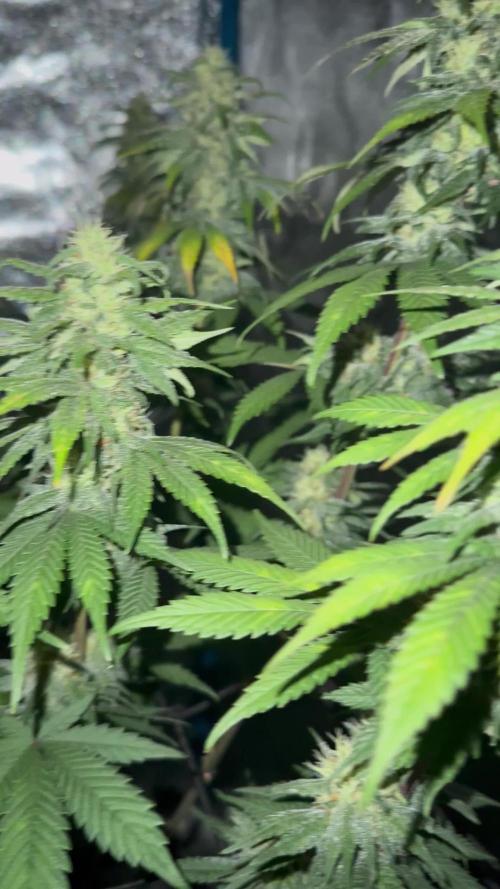By continuing to use the website or clicking Accept you consent to our cookies and personal data policy and confirm that you are at least 18 year old. For details please see Privacy Policy and Terms
Accept
Likes
117
Share


@PEAKYPLANTERS
Follow
hi to all, brothers and masters of weed.
my queens are really strong !!!
I started with the flushing for these little girls who have started to turn purple .... the smell is very strong and it is really AMAZING
The buds are literally covered with powerful glue that just touching them release a strong and pleasant smell .... I think I will not throw anything from the waste because every corner of the plant is covered with sparkling and powerful trichomes with which I hope to make good hashish
I leave you wishing you a happy and abundant harvest for all of you
see you around
Likes
8
Share


@PoppaJoe
Follow
Only adding water at a Ph of between 5.5 and 7…still No extra nutrients…switched placement of the plants because the Big Bang was starting to cone and figured the mist from the humidifier was giving too much extra moisture (Not sure how much sense that makes but it healed after the move so I guess🤷♂️🏾) Other than that everything was fine.
Likes
29
Share


@yvet_te
Follow
My humidity is so high this week. Put the dehumidifier in the tent since temps are dropping, but I can’t seem to get it down below 70%. Ordered some DampRid but they sent the Fresh Scent one 🤦♀️🏻 Other than that, flowers are looking good so far. Trying to defoliate but it’s hard to reach the back of the plants since my tent is against a wall.
With the AC Infinity bases, I’ve been using water in the reservoir and hand-watering the nutrient mixture. I’m worried I’ll overwater and it may be contributing to my high RH. Going to try putting the liquid nutes right in the reservoir, and doing Big Bloom 1x/week with a top feed.
Likes
15
Share


@XperencdGmanXG
Follow
Well I love this Ya Hemi hits very strong. Shit is dank and stinky and WILL put you on your ass! Trying out a totally new way of growing for me. Also to help with costs I decided to make a 5 gal tea reactor, to grow out the EM1 which will save me about 75% on all microbe products, and also save on feralization when used in conjunction with foliar sprays. Using grassroots LivingSocial pots and a new full organic mix. Fingers crossed as we get on the ya hemi organic express!
Likes
29
Share


@Hashy
Follow
********************************************
Week 16 Fade(week 12 flower)
********************************************
Light cycle=12/12
Light Power=110w 47%
Extractor controller settings (during lights on).
High temp= 26c
Temp step=0c
High Rh= 46%
Rh step=0%
Speed max=10
Speed min=5
Extractor controller settings (during lights off).
High temp= 20c
Temp step=0c
High Rh= 50%
Rh step=0%
Speed max=10
Speed min=5
Smart controller settings (during lights on).
Lights on=9.00am
Smart controller settings (during lights off).
Lights off=9.00pm
VPD aim=1.0-1.5
DLI aim=30-40
EC aim=1.0-1.8
PH aim=6.0-6.5
💧💧💧💧💧💧💧💧💧💧💧💧💧💧💧💧
NPK= 0-0-0
Method= Automatic
Feed=Fade nutes
Neutralise=0.1ml/L
Advanced Nutrients Flawless Finish=2ml/L
Easy Ph down=0ml/L
(1ml=24 drops, 1 drop=0.04ml)
Easy Ph Up=0.0ml/L
(1ml=24 drops, each drop is 0.04ml)
Ec=0.33 PH=7.0/6.9
Runs=10
Run times=3mins (0.75L/0.375L each)
Gap times= 17mins
Total runtime=30mins(6.0L/3.0L each)
Total flowrate= 0.25L/0.125L/min each
Auto start time=10.00am
Auto stop time=1.03pm
💧💧💧💧💧💧💧💧💧💧💧💧💧💧💧💧
********************************************
********************************************
📅24/5/25 Saturday(Day 106)
📋 Put stakes in and spread her out a little now she has all this space to herself.
📅25/5/25 Sunday(Day 107)
📋
📅26/5/25 Monday(Day 108)
📋
💧
Automatic Fade nutes
Ec=0.3 PH=6.5/6.2
Volume=6L
Volume left=2L
Volume used=4L
Total runoff=0.7L
Ec=2.1 PH=/6.8
💧
📅27/5/25 Tuesday(Day 109)
📋Lowered light power to 100w
📅28/5/25 Wednesday(Day 110)
📋Defoliate some spent leaves.
📅29/5/25 Thursday(Day 111)
📋
📅30/5/25 Friday(Day 112)
📋 Day 84 flower.
💧
Automatic Water
Ec=0.2 PH=6.8/6.9
Volume=6L
Volume left=1.5L
Volume used=4.5L
Total runoff=1L
Ec=2.3PH=/6.7
💧
********************************************
Weekly roundup.
📋 She's had a full week under the light to herself, she's almost ready. I'm tempted to chop at least the main top cola any day now and let the rest mature a little more. I may not complete another full week so this maybe my last weekly report before harvest.
Back soon.
Take it easy.
********************************************
Likes
5
Share


@cadur
Follow
Plant is still tiny, grew 5cm / 2".
It looks like it's slowly dying. The original leaves at the bottom went brown so I removed them. Some of the upper ones don't look great either.
It's not a calcium deficiency. The bottom of the pot was very dry so I rinsed the soil with plain water. The dryness is the result of:
A) me having to add a heater
B) the blumat auto watererers focussing the wanter in specific areas. The roots clump around the waterers thus everything else drys up. I need to water directly from now on and look to fix this problem going forward.
Likes
144
Share


@DevilsBud
Follow
New start of a week FLOWERING
This grow i have seen it all from giants to dwarf that doesn't want to flower to a mutant call mohawk ethos you name it i gots it's lmao couple week ago trow out a male but still all that don't matter because what i have is great to me maybe not perfect but i ain't perfect either
20/4/22
The smell coming out of the tent is one tropical garden very happy so far with results and there hopefully bulking up
Will be posting more photos Tru the week
visit www.marshydro.eu
for your best gear and use the PROMO CODE: DEVILSBUD
Some info about the Marshydro FC-4800
Superb Quality LED Chips: The whole light is composed of 1206 pcs Samsung lm301b and Osram 660nm chips. More than two times as many LEDs are used to drive the grow lights at low currents and to avoid overdrive. Quality is guaranteed and efficiency is up to 2.8 μmol/j.
Even PAR Distribution and High PPFD Output: The multi-light bar design and the densely distributed light chips enable the LED grow lights to achieve the optimum PPFD required for plant growth over the entire effective coverage area.
Specifically Designed Spectrum: To ensure even plant growth, blue and red light are enhanced on the basis of a full spectrum combination. Not only does this accelerate plant growth, but it also improves the yield and quality of the plants at the same time.
Dimming Daisy Chain Function: The dimming function saves on electricity costs and enables brightness from 10% to 100% for the different stages of plant growth. A single master light can connect up to 30 lights in a daisy-chain system.
Business LED Grow Light: The light's wavy heat sink dissipates heat quickly and the IP65 waterproof allows the light to operate in humid conditions. 180° collapsible feature for easier installation. All these features provide favorable assistance for commercial cultivation.
And some tent info
●【Lock All Light Insid】MARS HYDRO Grow Tent Interior is made of diamond mylar. Non-toxic to the environment, no harm to plants. High-quality 1680D canvas being double stitched, (ALL OTHERS BRAND grow tent is 601D canvas) which is tear-proof for perfect light locking, No light leaks or rips at all.
●【Durability Grow Tent】Stable Metal corner adapters and poles are the trustful supporters of the tent. No rusting nor paint-falling. Quick easy tool-free installation. Carries strong heavy-duty SBS zippers, double layer lining to create a light-proof seal.
●【Easy Observation of your Plants】Special peeks window made by double layers of cloths. Observe the growing conditions of your plants without opening the tent and avoid disturbing plants. The peek window also serves to dissipate heat and ventilate air.
●【Removable Tray Keep Clean】The package includes a removable waterproof floor tray to hold soil and fallen leaves. The tray can be taken out easily to wash. Removable and water-proof makes cleaning easy.
●【Good Ventilation&Fast Assembly】 Circular double-sleeved vent holes with adjustable nylon strap for air circulation by exhaust fan, ducting, carbon filter, or reflector. Better allows proper light, heat, and airflow. Quick tool-free installation. Reinforced by a sturdy metal frame to ensure security and stability, supports up to 140lb. Perfectly safeguard your plants to thrive even in winter
Likes
5
Share


@ErreTheGrower_IT4
Follow
From the first days of flowering, I immediately saw that this strain had potential in terms of the rapid development of lots of smell trichomes..
~
Hope better every day ❤️
Likes
32
Share


@Brujha77
Follow
Beginn Woche 7 Blüte.
Die beiden entwickeln sich richtig schön 👍
Bis auf Gießen und hin und wieder ein paar Blätter weniger ist warten angesagt.
Sie Bekommen die Woche nochmal BioEnhancer, evtl. nochmal etwas PK Booster und danach nur noch Wasser.
Tag96
Beide bekamen Nochmal je 1,5l Wasser mit 1g/l BioEnhancer.
Denke mal so 2-3 Wochen brauchen die Damen noch.
Likes
38
Share


@Nickeluring
Follow
The beautiful mutant is turning out to be a very special one. The buds are the stickiest in the tent, and she is full of them! I can't wait to try these lovely fruits. She's dealing very well with the heat we have.
Likes
22
Share


@Spike-GreenGrower
Follow
🧡💚 Kickass Auto 🧡💚
from Kannabia Seed Company
(31 days old)
That's the end of Veg Week 4! Pre-flowers have appeared!!
-------------------------------------------
-------------------------------------------
Aug 9
Found out the hard way that my ph meter needed adjusting. In fact, now that I think about it, I didn't test it when I purchased it so it may have been off slightly the entire time 😱 Was off by +0.7%
Also may have thrips, but I don't see any. Perhaps the white spots on the leaves are ph related?
Funny story though, within 10 minutes of having had the white spots pointed out to me, a ladybug flew into the lung room. Caught it and released it into the tent 😈 If I find her corpse within a few days, we'll know there are no thrips!
Removed the two affected leaves anyway.
-------------------------------------------
-------------------------------------------
Aug 10
Ordered nematodes and 30 ladybug larvae, just to be safe. I'm also contemplating setting up a ladybug hotel/lodge for a year round supply of predators 😈
(Hopefully) Chased out the bad ph with a new batch of feed. 6.3%ph and didn't even need PH Min!!
Poured until I received 1L of runoff 💪
-------------------------------------------
-------------------------------------------
Thank you for stopping by!
(Hope to) see you next update 👊😎
Likes
48
Share


@pifflestikkz
Follow
Day 64
02/09/24 Monday
Feed today using de-chlorinated tap water pH 6 only.
Day 66
04/09/24 Wednesday
De-chlorinated tap water pH 6 today with calmag
Day 68
06/09/24 Friday
De-chlorinated tap water pH 6 today with Plagron products.
Day 70
08/09/24 Sunday
(End of week)
Feed again today using de-chlorinated tap water pH 6 only.
Likes
12
Share


@Jays_Not_Here_Man
Follow
This was an easy grow, and had some amazing results. This is some of my best homegrown to date ❤️ the ladies were easy to manage, no PM, pests or disease. The root balls were enormous, wasn’t much soil to recover. They got heavy in the end from the weight but managed to stay upright for the most part. They were big stretchers , prepare for that, scrog was a good way to go but some of the eager beavers got away from me, which ended in some massive colas. Overall easy to grow, no surprises and you won’t regret the results! 10/10 ❤️👊🤤
Likes
67
Share


@Dunk_Junk
Follow
She only grew 2cm this week so that means she is is full flower mode.
Look how much the trichomes have increased this week!
I've never grown a CBD strain before, is this what they do? 😃
Minimal input from me this week. Just watering.
Likes
12
Share


@Siriuz
Follow
Starting week 14
Feeding the lady her last meal
@1900ppm bloom nutes
Day 94
( Day 3 from. Week 14)
Day 95 and Day 96
Very well, almost ready to flush again
Day 97
Growing fat and smelling so good
Full of Trichomes and resin
Day 98
End of week 14





























